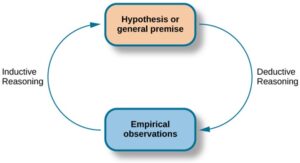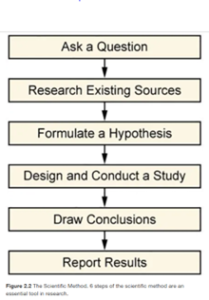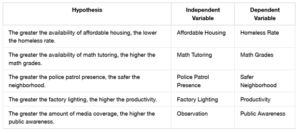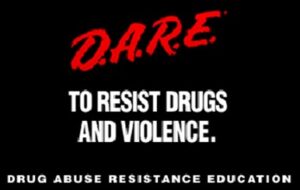Part 5- Scientific Research in the Social Sciences
Part 5- Scientific Research in the Social Sciences
Objectives
- Explain how scientific research addresses questions about behavior
- Appreciate how scientific research can be important in making personal decisions
Scientific research is a critical tool for successfully navigating our complex world. Without it, we would be forced to rely solely on intuition, other people’s authority, and blind luck. While many of us feel confident in our abilities to decipher and interact with the world around us, history is filled with examples of how very wrong we can be when we fail to recognize the need for evidence in supporting claims. At various times in history, we would have been certain that the sun revolved around a flat earth, that the earth’s continents did not move, and that mental illness was caused by possession (Figure). It is through systematic scientific research that we divest ourselves of our preconceived notions and superstitions and gain an objective understanding of ourselves and our world. Some of our ancestors, across the world and over the centuries, believed that trephination—the practice of making a hole in the skull, as shown here—allowed evil spirits to leave the body, thus curing mental illness and other disorders.

(credit:“taiproject”/Flickr)
The goal of all scientists is to better understand the world around them. Psychologists focus their attention on understanding behavior, as well as the cognitive (mental) and physiological (body) processes that underlie behavior. In contrast to other methods that people use to understand the behavior of others, such as intuition and personal experience, the hallmark of scientific research is that there is evidence to support a claim. Scientific knowledge is empirical: It is grounded in objective, tangible evidence that can be observed time and time again, regardless of who is observing.
While behavior is observable, the mind is not. If someone is crying, we can see behavior. However, the reason for the behavior is more difficult to determine. Is the person crying due to being sad, in pain, or happy? Sometimes we can learn the reason for someone’s behavior by simply asking a question, like “Why are you crying?” However, there are situations in which an individual is either uncomfortable or unwilling to answer the question honestly, or is incapable of answering. For example, infants would not be able to explain why they are crying. In such circumstances, the psychologist must be creative in finding ways to better understand behavior.
In general, sociologists tackle questions about the role of social characteristics in outcomes or results. For example, how do different communities fare in terms of psychological well-being, community cohesiveness, range of vocation, wealth, crime rates, and so on? Are communities functioning smoothly? Sociologists often look between the cracks to discover obstacles to meeting basic human needs. They might also study environmental influences and patterns of behavior that lead to crime, substance abuse, divorce, poverty, unplanned pregnancies, or illness. And, because sociological studies are not all focused on negative behaviors or challenging situations, social researchers might study vacation trends, healthy eating habits, neighborhood organizations, higher education patterns, games, parks, and exercise habits.
When sociologists apply the sociological perspective and begin to ask questions, no topic is off limits. Every aspect of human behavior is a source of possible investigation. Sociologists question the world that humans have created and live in. They notice patterns of behavior as people move through that world. Using sociological methods and systematic research within the framework of the scientific method and a scholarly interpretive perspective, sociologists have discovered social patterns in the workplace that have transformed industries, in families that have enlightened family members, and in education that have aided structural changes in classrooms. [1]
Approaches to Research
The Scientific Method
Scientific knowledge is advanced through a process known as the scientific method. Basically, ideas (in the form of theories and hypotheses) are tested against the real world (in the form of empirical observations), and those empirical observations lead to more ideas that are tested against the real world, and so on. In this sense, the scientific process is circular. The types of reasoning within the circle are called deductive and inductive. In deductive reasoning, ideas are tested against the empirical world; in inductive reasoning, empirical observations lead to new ideas (Figure). These processes are inseparable, like inhaling and exhaling, but different research approaches place different emphasis on the deductive and inductive aspects.

Psychological research relies on both inductive and deductive reasoning. In the scientific context, deductive reasoning begins with a generalization—one hypothesis—that is then used to reach logical conclusions about the real world. If the hypothesis is correct, then the logical conclusions reached through deductive reasoning should also be correct. A deductive reasoning argument might go something like this: All living things require energy to survive (this would be your hypothesis). Ducks are living things. Therefore, ducks require energy to survive (logical conclusion). In this example, the hypothesis is correct; therefore, the conclusion is correct as well. Sometimes, however, an incorrect hypothesis may lead to a logical but incorrect conclusion. Consider this argument: all ducks are born with the ability to see. Quackers is a duck. Therefore, Quackers was born with the ability to see. Scientists use deductive reasoning to empirically test their hypotheses. Returning to the example of the ducks, researchers might design a study to test the hypothesis that if all living things require energy to survive, then ducks will be found to require energy to survive.
Deductive reasoning starts with a generalization that is tested against real-world observations; however, inductive reasoning moves in the opposite direction. Inductive reasoning uses empirical observations to construct broad generalizations. Unlike deductive reasoning, conclusions drawn from inductive reasoning may or may not be correct, regardless of the observations on which they are based. For instance, you may notice that your favorite fruits—apples, bananas, and oranges—all grow on trees; therefore, you assume that all fruit must grow on trees. This would be an example of inductive reasoning, and, clearly, the existence of strawberries, blueberries, and kiwi demonstrate that this generalization is not correct despite it being based on a number of direct observations. Scientists use inductive reasoning to formulate theories, which in turn generate hypotheses that are tested with deductive reasoning. In the end, science involves both deductive and inductive processes. Sociologists can use the scientific method not only to collect but also to interpret and analyze data. They deliberately apply scientific logic and objectivity. They are interested in—but not attached to—the results. They work outside of their own political or social agendas. This does not mean researchers do not have their own personalities, complete with preferences and opinions. But sociologists deliberately use the scientific method to maintain as much objectivity, focus, and consistency as possible in collecting and analyzing data in research studies. A scientific process of research establishes parameters that help make sure results are objective and accurate. Scientific methods provide limitations and boundaries that focus a study and organize its results. The scientific method involves developing and testing theories based on empirical evidence. It is defined by its commitment to systematic observation of the empirical world and strives to be objective, critical, skeptical, and logical. It involves a series of six prescribed steps that have been established over centuries of scientific scholarship.

The Scientific Method. 6 steps of the scientific method are an essential tool in research.
Step 1: Ask a Question or Find a Research Topic
The first step of the scientific method is to ask a question, select a problem, and identify the specific area of interest. The topic should be narrow enough to study within a geographic location and time frame. “Are societies capable of sustained happiness?” would be too vague. The question should also be broad enough to have universal merit. “What do personal hygiene habits reveal about the values of students at XYZ High School?” would be too narrow. Sociologists strive to frame questions that examine well-defined patterns and relationships. In a hygiene study, for instance, hygiene could be defined as “personal habits to maintain physical appearance (as opposed to health),” and a researcher might ask, “How do differing personal hygiene habits reflect the cultural value placed on appearance?”
Step 2: Review the Literature/Research Existing Sources
The next step researchers undertake is to conduct background research through a literature review, which is a review of any existing similar or related studies. A visit to the library, a thorough online search, and a survey of academic journals will uncover existing research about the topic of study. This step helps researchers gain a broad understanding of work previously conducted, identify gaps in understanding of the topic, and position their own research to build on prior knowledge. Researchers—including student researchers—are responsible for correctly citing existing sources they use in a study or that inform their work. While it is fine to borrow previously published material (as long as it enhances a unique viewpoint), it must be referenced properly and never plagiarized. To study crime, a researcher might also sort through existing data from the court system, police database, prison information, interviews with criminals, guards, wardens, etc. It’s important to examine this information in addition to existing research to determine how these resources might be used to fill holes in existing knowledge. Reviewing existing sources educates researchers and helps refine and improve a research study design.
Step 3: Formulate a Hypothesis
A hypothesis is an explanation for a phenomenon based on a conjecture about the relationship between the phenomenon and one or more causal factors. In sociology, the hypothesis will often predict how one form of human behavior influences another. For example, a hypothesis might be in the form of an “if, then statement.” Let’s relate this to our topic of crime: If unemployment increases, then the crime rate will increase. In scientific research, we formulate hypotheses to include an independent variables (IV), which are the cause of the change, and a dependent variable (DV), which is the effect, or thing that is changed. In the example above, unemployment
is the independent variable and the crime rate is the dependent variable. In a sociological study, the researcher would establish one form of human behavior as the independent variable and
observe the influence it has on a dependent variable. How does gender (the independent variable) affect rate of income (the dependent variable)? How does one’s religion (the independent variable) affect family size (the dependent variable)? How is social class (the dependent variable) affected by level of education (the independent variable).

Table 2.1 Examples of Dependent and Independent Variables
Typically, the independent variable causes the dependent variable to change in some way. Taking an example from Table 2.1, a researcher might hypothesize that teaching children proper hygiene (the independent variable) will boost their sense of self-esteem (the dependent variable). Note, however, this hypothesis can also work the other way around. A sociologist might predict that increasing a child’s sense of self-esteem (the independent variable) will increase or improve habits of hygiene (now the dependent variable). Identifying the independent and dependent variables is very important. As the hygiene example shows, simply identifying related two topics or variables is not enough. Their prospective relationship must be part of the hypothesis.
Step 4: Design and Conduct a Study
Researchers design studies to maximize reliability, which refers to how likely research results are to be replicated if the study is reproduced. Reliability increases the likelihood that what happens to one person will happen to all people in a group or what will happen in one situation will happen in another. Cooking is a science. When you follow a recipe and measure ingredients with a cooking tool, such as a measuring cup, the same results is obtained as long as the cook follows the same recipe and uses the same type of tool. The measuring cup introduces accuracy into the process. If a person uses a less accurate tool, such as their hand, to measure ingredients rather than a cup, the same result may not be replicated. Accurate tools and methods increase reliability. Researchers also strive for validity, which refers to how well the study measures what it was designed to measure. To produce reliable and valid results, sociologists develop an operational definition, that is, they define each concept, or variable, in terms of the physical or concrete steps it takes to objectively measure it. The operational definition identifies an observable condition of the concept. By operationalizing the concept, all researchers can collect data in a systematic or replicable manner. Moreover, researchers can determine whether the experiment or method validly represent the phenomenon they intended to study. A study asking how tutoring improves grades, for instance, might define “tutoring” as “one-on-one assistance by an expert in the field, hired by an educational institution.” However, one researcher might define a “good” grade as a C or better, while another uses a B+ as a starting point for “good.” For the results to be replicated and gain acceptance within the broader scientific community, researchers would have to use a standard operational definition. These definitions set limits and establish cut-off points that ensure consistency and replicability in a study.
Step 5: Draw Conclusions
After constructing the research design, sociologists collect, tabulate or categorize, and analyze data to formulate conclusions. If the analysis supports the hypothesis, researchers can discuss the implications of the results for the theory or policy solution that they were addressing. If the analysis does not support the hypothesis, researchers may consider repeating the experiment or think of ways to improve their procedure. However, even when results contradict a sociologist’s prediction of a study’s outcome, these results still contribute to sociological understanding. Sociologists analyze general patterns in response to a study, but they are equally interested in exceptions to patterns. In a study of education, a researcher might predict that high school dropouts have a hard time finding rewarding careers. While many assume that the higher the education, the higher the salary and degree of career happiness, there are certainly exceptions. People with little education have had stunning careers, and people with advanced degrees have had trouble finding work. A sociologist prepares a hypothesis knowing that results may substantiate or contradict it. Sociologists carefully keep in mind how operational definitions and research designs impact the results as they draw conclusions. Consider the concept of “increase of crime,” which might be defined as the percent increase in crime from last week to this week, as in the study of Swedish crime discussed above. Yet the data used to evaluate “increase of crime” might be limited by many factors: who commits the crime, where the crimes are committed, or what type of crime is committed. If the data is gathered for “crimes committed in Houston, Texas in zip code 77021,” then it may not be generalizable to crimes committed in rural areas outside of major cities like Houston. If data is collected about vandalism, it may not be generalizable to assault.
Step 6: Report Results
Researchers report their results at conferences and in academic journals. These results are then subjected to the scrutiny of other social scientists in the field. Before the conclusions of a study become widely accepted, the studies are often repeated in the same or different environments. In this way, sociological theories and knowledge develops as the relationships between social phenomenon are established in broader contexts and different circumstances.
Interpretive Framework
While many sociologists rely on empirical data and the scientific method as a research approach, others operate from an interpretive framework. While systematic, this approach doesn’t follow the hypothesis-testing model that seeks to find generalizable results. Instead, an interpretive framework, sometimes referred to as an interpretive perspective, seeks to understand social worlds from the point of view of participants, which leads to in-depth knowledge or understanding about the human experience. Interpretive research is generally more descriptive or narrative in its findings. Rather than formulating a hypothesis and method for testing it, an interpretive researcher will develop approaches to explore the topic at hand that may involve a significant amount of direct observation or interaction with subjects including storytelling. This type of researcher learns through the process and sometimes adjusts the research methods or processes midway to optimize findings as they evolve.
Critical Sociology
Critical sociology focuses on deconstruction of existing sociological research and theory. Informed by the work of Karl Marx, scholars known collectively as the Frankfurt School proposed that social science, as much as any academic pursuit, is embedded in the system of power constituted by the set of class, caste, race, gender, and other relationships that exist in the society. Consequently, it cannot be treated as purely objective. Critical sociologists view theories, methods, and the conclusions as serving one of two purposes: they can either legitimate and rationalize systems of social power and oppression or liberate humans from inequality and restriction on human freedom. Deconstruction can involve data collection, but the analysis of this data is not empirical or positivist. [2]
Use of Research Information
Trying to determine which theories are and are not accepted by the scientific community can be difficult, especially in an area of research as broad as psychology. More than ever before, we have an incredible amount of information at our fingertips, and a simple internet search on any given research topic might result in a number of contradictory studies. In these cases, we are witnessing the scientific community going through the process of reaching a consensus, and it could be quite some time before a consensus emerges. For example, the hypothesized link between exposure to media violence and subsequent aggression has been debated in the scientific community for roughly 60 years. Even today, we will find detractors, but a consensus is building. Several professional organizations view media violence exposure as a risk factor for actual violence, including the American Medical Association, the American Psychiatric Association, and the American Psychological Association (American Academy of Pediatrics, American Academy of Child & Adolescent Psychiatry, American Psychological Association, American Medical Association, American Academy of Family Physicians, American Psychiatric Association, 2000). In the meantime, we should strive to think critically about the information we encounter by exercising a degree of healthy skepticism. When someone makes a claim, we should examine the claim from a number of different perspectives: what is the expertise of the person making the claim, what might they gain if the claim is valid, does the claim seem justified given the evidence, and what do other researchers think of the claim? This is especially important when we consider how much information in advertising campaigns and on the internet claims to be based on “scientific evidence” when in actuality it is a belief or perspective of just a few individuals trying to sell a product or draw attention to their perspectives. We should be informed consumers of the information made available to us because decisions based on this information have significant consequences. One such consequence can be seen in politics and public policy. Imagine that you have been elected as the governor of your state. One of your responsibilities is to manage the state budget and determine how to best spend your constituents’ tax dollars. As the new governor, you need to decide whether to continue funding the D.A.R.E. (Drug Abuse Resistance Education) program in public schools (Figure). This program typically involves police officers coming into the classroom to educate students about the dangers of becoming involved with alcohol and other drugs. According to the D.A.R.E. website (www.dare.org), this program has been very popular since its inception in 1983, and it is currently operating in 75% of school districts in the United States and in more than 40 countries worldwide. Sounds like an easy decision, right? However, on closer review, you discover that the vast majority of research into this program consistently suggests that participation has little, if any, effect on whether or not someone uses alcohol or other drugs (Clayton, Cattarello, & Johnstone, 1996; Ennett, Tobler, Ringwalt, & Flewelling, 1994; Lynam et al., 1999; Ringwalt, Ennett, & Holt, 1991). If you are committed to being a good steward of taxpayer money, will you fund this particular program, or will you try to find other programs that research has consistently demonstrated to be effective?

The D.A.R.E. program continues to be popular in schools around the world despite research suggesting that it is ineffective. Ultimately, it is not just politicians who can benefit from using research in guiding their decisions. We all might look to research from time to time when making decisions in our lives. Imagine you just found out that a close friend has breast cancer or that one of your young relatives has recently been diagnosed with autism. In either case, you want to know which treatment options are most successful with the fewest side effects. How would you find that out? You would probably talk with your doctor and personally review the research that has been done on various treatment options — always with a critical eye to ensure that you are as informed as possible. In the end, research is what makes the difference between facts and opinions. Facts are observable realities, and opinions are personal judgments, conclusions, or attitudes that may or may not be accurate. In the scientific community, facts can be established only using evidence collected through empirical research.
